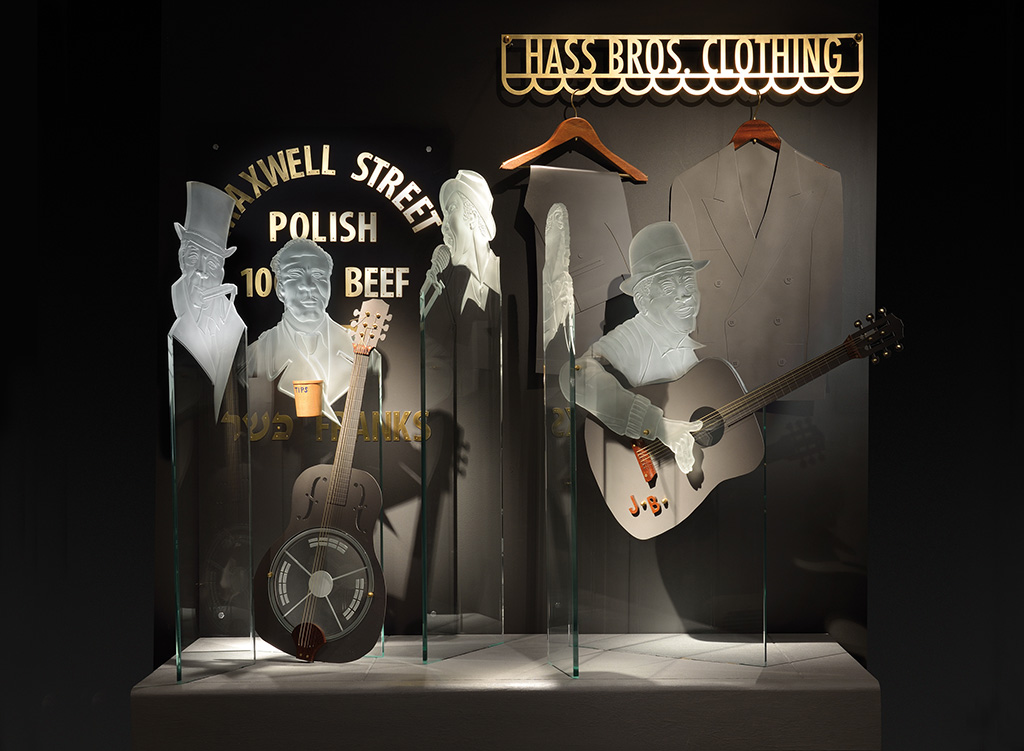Maxwell Street
Materials Sandblasted glass, steel, wood, and brass
I was born and raised in Chicago and in 1956 when I was approaching my 13th birthday, my father took me to Maxwell Street to buy me my first suit. This was a momentous occasion not because I was getting a suit, but it was my introduction to the blues. Maxwell street was the center of Jewish pushcart commerce and haberdashery emporiums, it was also where black blues musicians congregated, played, and thrived in harmony with their neighbors. My dad let me stay and listen that day and I became a life-long fan.
The merchants provided electrical extension cords from their establishments to power the amplifiers of the musicians and in return the musicians were an attraction to lure customers into the shops.
Many famous blues musicians got their start on Maxwell Street having migrated to the city from the deep south, Muddy Waters, Little Walter, Bo Diddley, and Howlin’ Wolf to name a few. What makes Chicago Blues distinctive was the electrification of the southern roots music giving it a hard edge urban sound.
Against a background of food signs and clothing shops, I have chosen to paint the story of this lively hub through the images of five of the musicians who played for tips and stayed on that street throughout their careers, Stovepipe Daddy, Arvella Grey, Hound Dog Taylor, Carey Bell, and Blind Jim Brewer. All of them have been recorded and you can hear their music on several anthologies.
In the early 1990’s began the demise of Maxwell Street with the expansion of the University of Illinois at Chicago campus into the area. Protests occurred and petitions were circulated to no avail; merchants were forced to move. and the last music was heard as 1999 passed into 2000 on a bandstand on the northeast corner of Maxwell and Halstead. The campus construction crews were ordered to block off the area and the music ceased.
